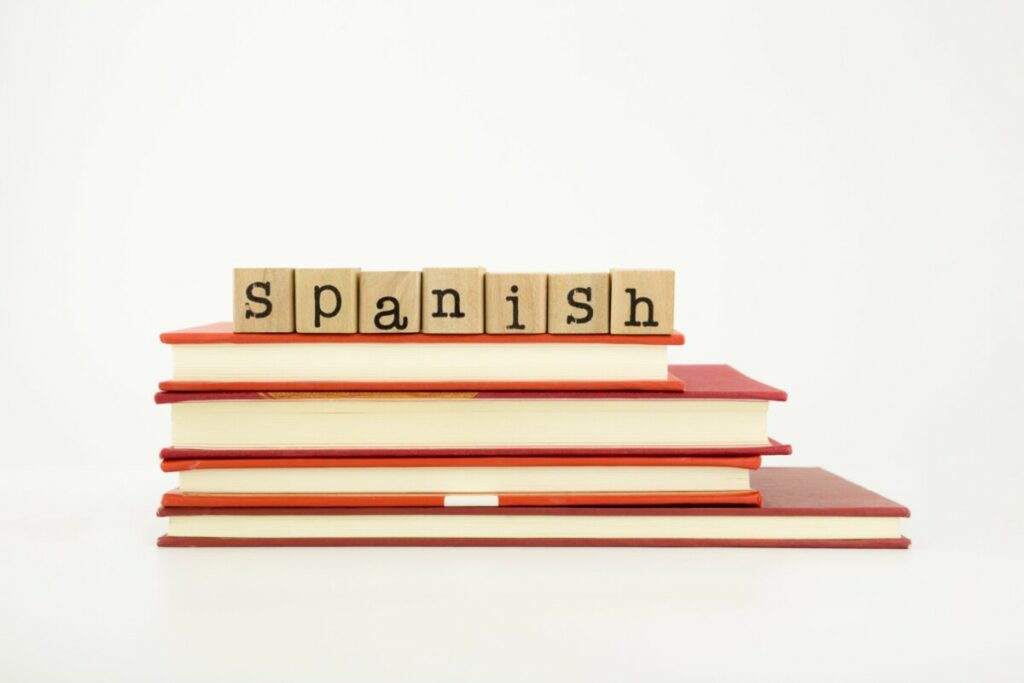There are so many languages spoken throughout the world, but one used in many countries is Spanish. But what are the best methods for learning Spanish?
The best methods for learning Spanish are using apps, listening to podcasts, using word association, hiring a tutor, and studying grammar and vocabulary from a book. These methods can be used alone or together, but the key to learning any language is consistency and memory recall.
There are many methods to learn any language, so read below for how you can learn Spanish in a way you may understand. The list below is in order of beginner techniques to expert techniques that can be used as your Spanish skills advance.
1. Language Apps
There are a lot of apps out there that are designed to help you learn a language. One you likely know of is Duolingo. This app exposes you to the language of your choice daily. You must read, comprehend, speak, match words, and more daily. It gives you reminders and with constant exposure, you can learn the language quickly.
Of course, if you want to be fluent and not simply be able to comprehend a menu while you’re on vacation in Mexico, then you need to do more than learn from an app. But, this is a great way to begin. You can go from knowing little to no Spanish at all to knowing words, grammar, pronunciation, and sentence structure. This technique is perfect for beginners, and then you can move on to intermediate and expert methods of learning.
2. Study the Grammar, Vocab, and Sentence Structure

This method involves using a Spanish textbook and studying it. Now, for many people, using an app may be easier for learning the vocabulary words, for learning the proper grammar, sentence structure, and more. But, there is a lot you can learn about when you use the book.
You can get a Spanish textbook from your public library or order one online. There are plenty to choose from, so there should be one in an acceptable price range for you. But using the book can help you learn more words, and there can be more cultural information to help you understand the reasoning and meanings behind the language.
Textbooks also have activities and quizzes throughout them, so you might enjoy getting one for practicing, learning, and using it alongside a Spanish learning app.
3. Write It
A lot of the time, people who try to learn Spanish on their own forget to practice writing the language. They use an app, but they forget to not only listen, but also comprehend, speak, and word match. But, they also need to practice writing it.
The tip above that mentions using a textbook so you have Spanish-learning activities is perfect for this. But, aside from that, you can write journal entries, write vocabulary sentences like you used to do in elementary school, and you can simply practice writing down the words and knowing how to spell them.
So, think back to when you were in elementary school. You used to practice writing down each letter of the alphabet, write the vocab words multiple times in a row, write a sentence using the vocab word, and more. You can take those methods and do that while learning Spanish. You can also find simple worksheets on the internet for free.
4. Learn from a Podcast

There are so many podcasts out there, and some are dedicated to helping you learn and practice Spanish. You can listen to one or multiple podcasts in Spanish, and you can listen while you are doing chores, going on a walk/run, on a car ride, etc.
The podcasts will help you hear how the words and sentences are supposed to sound when you talk with a native Spanish speaker, and they can help you pronounce them properly. You can learn to speak Spanish very formally, but for native speakers, if you talk too precisely, you are hard to understand. It is like you are speaking old Spanish to them, so imagine someone learning English and speaking old Shakespearian English to you. It is hard to understand, so podcasts can help you understand the way people use Spanish today.
5. Practice Memory Recall
At the beginning of this article, we talked about how consistency is key to learning any language, and that is true. Something to help you learn through consistency is to practice memory recall.
Memory recall is what it sounds like; it is getting prompted and trying to recall a memory without help. This looks like being asked a question in Spanish and trying to remember how to respond to it. This is a technique that psychologists love. Psychologists say it helps with learning and transferring information from short-term to long-term memory.
You need exposure to material daily, and you need to recall knowledge from the previous days before learning a language and move the information from short-term memory to your long-term memory. This is a study technique you can use when learning anything, and it does work! Try it to help you learn Spanish.
6. Mnemonics or Word Association
Mnemonics are associating something like Spanish words with things like movies, colors, patterns, jokes, English words, and more. So, you can use word association where you associate a Spanish word with an English word, but that can be easier to forget.
But, you can learn to say “stone” in Spanish, which is “piedra,” and you can make an association between the two based on something you will remember. You can notice how it looks like the word “pie” and joke about how last Thanksgiving, you had a pie as hard as stone/piedra. Even silly associations help you remember, and it helps you with memory recall, as discussed above.
7. Tutor
You can also pay a tutor to help you learn Spanish. You may want to try this when you first begin learning so you can stay consistent and have a person to practice with you in person or over video chat. But, you can also try to learn the basics through an app and then hire a tutor when you are ready to practice speaking the language.
A tutor can meet with you once or a few times per week to help you practice. They will get a sense of how much you already know and what you need help with, and they can focus on different aspects of the language in each lesson. You can spend about 1 hour learning vocabulary, grammar, and writing sentences, then the next time you meet you can try to spend the entire hour speaking only in Spanish.
Having someone to talk to in Spanish is very helpful for learning the language, so a tutor is a great resource. You can also talk with a friend only in Spanish, and they can help you get the exposure you need to the language. Many people around the world speak Spanish, so you may have a friend who speaks it fluently.
8. Have Conversations in Spanish
This is similar to the point above, but there are some differences. By having conversations in Spanish, you can speak with a friend or go to places and try to only speak Spanish. Find a place you can observe, be involved in the culture, and try to get by only using Spanish. This is for people who already know the words and know how to conversate but need practice.
You can also get on a Facebook group of people wanting to practice speaking with people, and you can join their meetings and make new friends. They will have the same goal as you, so you can all help each other speak only in Spanish, and you can meet over zoom, in person, at a local event, etc.
When you have conversations exclusively in Spanish, your brain learns a lot, and you will be shocked at how much you remember. You can hear words in Spanish, have that knowledge be pushed to the forefront of your brain, and you will begin to join in on conversations and understand what is said. You may be slow at first, but as you practice and have conversations more often, you will be able to recall information faster, making more neuropathways in your brain for a faster recall of the Spanish you’ve been learning.
9. Immersion
Immersion involves throwing yourself into Spanish speaking. It is like going to Mexico, Spain, Guatemala, etc., and having to learn Spanish because you need to communicate with others. Many people do this, but you don’t have to move to another country for it.
Instead, you can practice Spanish throughout the week, and on Fridays or Saturdays, you can have the day entirely devoted to Spanish. You will speak Spanish, listen to Spanish music, watch shows in Spanish, order food in Spanish, and more.
This helps you by making your brain focus and shift its gears from its typical routine to trying to accommodate the language. You will become better and better at this, and one day when you want to go to a Spanish-speaking country to vacation, you will feel comfortable communicating in their native tongue.
10. Switch to Spanish Media

After you are in the habit of talking and communicating in Spanish, you can begin to make more permanent changes to your life that will expose you to Spanish every day. One way is to include more Spanish into your media intake.
You can find songs you like in Spanish and build a Spanish playlist that you can listen to whenever you want, not just on your only Spanish-speaking days. And you can begin to read books in Spanish. You can learn a lot from reading an entire story in Spanish. The character development, the story arc, the location, the feeling, and everything else you get from reading a good book can be told and felt through reading it in Spanish. You will grow your exposure and understanding a lot by reading a Spanish book for entertainment.
You can also listen to podcasts in Spanish for fun, watch the news in Spanish, and more. And, if you are feeling pretty good about your abilities, you can even change the set language on your device to be in Spanish. You can go into settings and find the set language and change it. You can see if you can change it for specific apps if you don’t want to commit to having an entirely Spanish phone. For example, Instagram allows you to change the language from English to Spanish.
In your settings, you will have a list of all your apps, and there you can click on an app and change the app to be set in Spanish. In your settings, you can also change the voice of your virtual assistant like Siri, and she can speak to you in Spanish. You can also change your keyboard for when you text friends or make the option available if you want to ever type in Spanish.
11. Consistency
Consistency is the only thing that sets beginners apart from those who can now understand and speak Spanish fluently. You have to keep with it. If you want to learn it, know that you can make progress in 1 week, 1 month, 6 months, 1 year, and more. You will not be able to speak fluently after 1 month. That takes more time and commitment. But, after 1 month, you can know more words and talk in more sentences than you did before.
To keep you motivated, at the end of each week write something in a journal about where you are progress-wise. Then, when you skip a day of practice or when you want to quit because you are not getting anywhere, you can look at it and remember how far you have come.
Keeping up with consistently studying and working at learning a language is the hardest part, but once you know it, you have officially learned the language!
